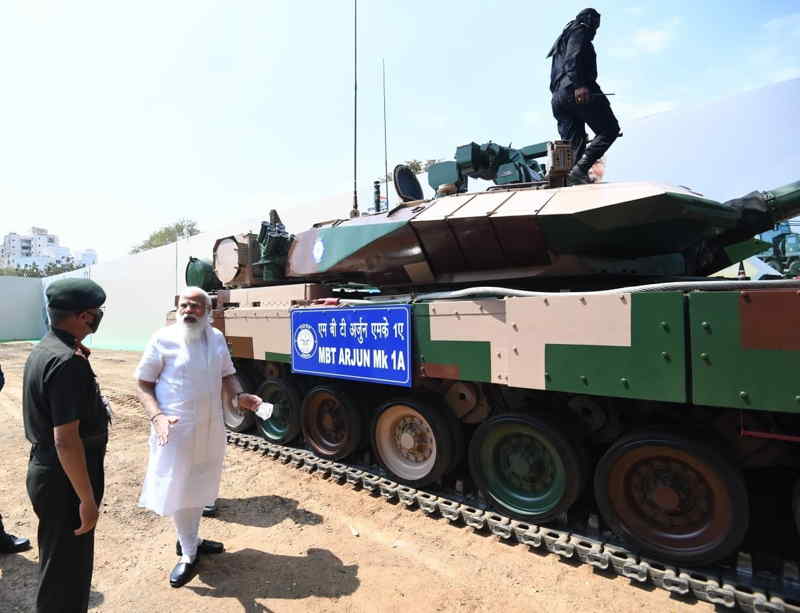Slowly, but steadily, the Indian defence industry is coming into its own by not only meeting some of the key demands of the armed forces but also exporting to friendly foreign nations. During 2015-19, India was the third largest importer of arms globally, according to a report by Stockholm International Peace Research Institute (SIPRI). But the clarion call of Atmanirbhar Bharat by Prime Minister Narendra Modi could reduce India’s critical reliance on imported weapons.
Last year PM Modi flagged the Atmanirbhar Bharat doctrine while addressing a defence seminar. The strategic vision of the Prime Minister was clear. He asserted that India's self-reliance on defence capabilities will boost its standing of being a net security provider in the Indian Ocean, make it a defence exporter for many friendly countries, which whom New Delhi will further deepen strategic ties.
“Our resolve for Aatmanirbhar Bharat is not inward-looking, but for making India capable and boosting global peace and economy,” said PM Modi while addressing Atmanirbhar Bharat Defence Industry Outreach Webinar in August last year.
PM Modi's speech triggered an energetic effort to develop an new ecosystem for defence manufacturing. That included modernising archaic defence public sector undertakings, energising shipyards to launching locally-made defence items and signing of new memoranda of understanding with the private sector to boost indigenisation.
The government fixed a $26-billion turnover target for defence industry by 2025, with $5-billion earmarked for exports by 2025. The major items of military exports include the Akash air defence missile system to friendly foreign countries.
The Defence Research and Development Organisation (DRDO) has been nailed for developing indigenous systems including the Agni and Prithvi series of strategic missiles, Light Combat Aircraft, Tejas, multi-barrel rocket launcher, Pinaka, air defence system, Akash, and a wide range of radars and electronic warfare systems.
To promote Atmanirbhar Bharat in the defence manufacturing, a separate budget of Rs 52,000 crore has been set aside for procurement from domestic vendors.
The results of Atmanibhar Bharat campaign in the military sector have already begun to show. In the beginning of this month PM Modi, handed over the first of 118 Arjun Mark 1A main battle tanks (MBT) to army chief General MM Naravane. The Arjun has been designed by the DRDO’s Combat Vehicles Research and Development Establishment (CVRDE) and will be produced by the OFB’s Heavy Vehicles Factory Avadi. The first batch of five MBTs will be handed over to the army within 30 months of signing of the contract.
The political push for the Arjun tanks follows the February 3 award of a contract for 83 LCA Tejas aircraft to Hindustan Aeronautics Ltd (HAL). The contract is worth Rs 48,000 crore- the largest placed on any Indian defence firm and was cleared by the Cabinet Committee on Security on January 13. The induction of third Scorpene submarine, INS Karanj on Tuesday has bolstered the Navy’s conventional deterrence and beefed-up India’s coastal defences India has a series of military tests and trials planned for 2021, including that of the Ballistic Missile Defence (BMD) shield, an Air-Independent Propulsion (AIP) system for submarines, and drones, besides a number of missiles, including a BrahMos with an 800-km range. The trials for the indigenous AIP, which will allow conventional submarines to stay under water for a longer duration, is to begin in the first quarter of 2021.
Another important trial that will take off is the one for phase 2 of the BMD, which aims to secure the country from all kinds of incoming missiles, including nuclear, and flying objects, through a multi-tier defence system. Phase 1 of the programme was completed last year. Also on the agenda is the full-fledged trial of the indigenous Rustom-2 Unmanned Aerial Vehicle (UAV). The DRDO expects Rustom-2 surveillance drone to match the specifications of the Israeli Heron unmanned aerial vehicle used by the Indian Air Force and Navy. The push to Rustom-2 program was given after the People’s Liberation Army (PLA) tried to occupy Indian territory in Ladakh on the basis of a 1959 cartographical claim on the Line of Actual Control (LAC).




















